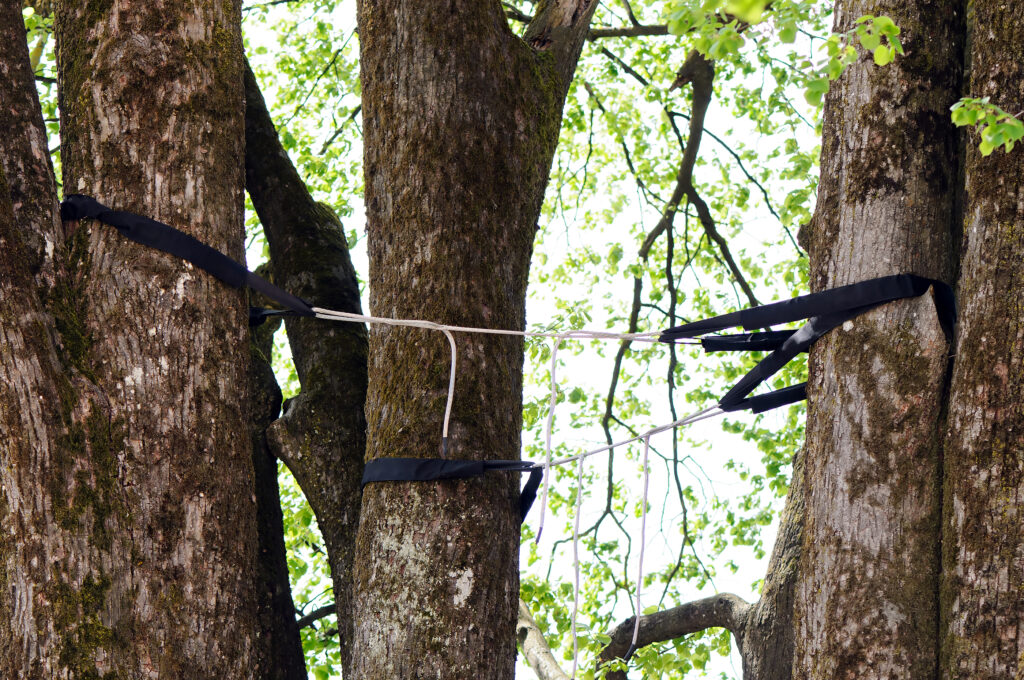Welcome to our comprehensive guide on tree cable installation – an essential technique used by arborists worldwide. In this blog post, we’ll delve into the nuts and bolts of tree cabling, covering everything from the indispensable tools needed, to the most efficient techniques and insider tips for optimum results.
Tree staking, cabling, and bracing are crucial components for maintaining the health and longevity of your trees. Whether you’re a seasoned arborist or a homeowner looking to preserve a cherished tree, this guide is packed with valuable insights to assist you. Let’s get started on your journey to mastering tree cable installation!

Why is Tree Cable Installation Necessary?
Before we dive into the specifics, let’s first understand why tree cable installation is essential. Trees are an integral part of our environment and provide numerous benefits such as shade, erosion control, and aesthetic value. However, due to various factors such as age, weather conditions, or structural weakness, trees can become hazardous. In such cases, tree cabling and bracing help reduce the risk of branch or whole tree failure by providing structural support. This technique can also help prevent further damage to a tree that has already experienced structural failure.
Tools for Tree Cable Installation
To successfully install tree cables, you’ll need certain tools and materials. These include:
Wire Rope: The most commonly used cable material is galvanized steel wire rope, which is strong and durable.
Cable Clamps: Used to secure the wire rope in place.
Thimbles: Metal loops used to prevent the wire rope from bending at sharp angles.
Turnbuckles: Tensioning devices that allow for adjustments to be made over time.
Hand Grips or Pliers: Necessary for tightening cable clamps.
Hand Saw or Pruning Shears: To remove any damaged or dead branches before installation.
It’s crucial to use high-quality materials that can withstand the elements and provide long-term support for your trees.
Techniques for Tree Cable Installation
Tree cabling and bracing techniques may vary depending on factors such as tree species, size, age, and type of installation. However, the most common techniques include:
Single Cable: In this technique, one cable is installed between two branches to provide support.
Double or Multiple Cable: Two or more cables are installed between main branches to distribute weight evenly.
Box Cabling: This technique involves creating a “box” with cables around a weak branch or trunk section.
Regardless of the technique used, it’s essential to carefully assess the tree’s structure and determine where cables are needed. It’s also crucial to use proper installation methods such as securing cable clamps with hand grips or pliers and avoiding over-tightening.
Insider Tips for Tree Cable Installation
Consult a Professional: While tree cabling can be done by homeowners, it’s always best to consult a professional tree care company for expert advice and assistance.
Regularly Inspect Cables: Weather conditions, growth, and other factors can affect the tension of tree cables over time. It’s essential to schedule regular inspections and make any necessary adjustments.
Use Appropriate Hardware: Selecting the right type and size of cable clamps, thimbles, and turnbuckles is crucial for successful tree cable installations. Use hardware that meets industry standards and can withstand the weight and tension of the cables.
Consider Tree Staking: In some cases, tree staking may also be necessary to provide additional support to a young or weak tree.
Wrapping Up
Tree cable installation is an essential technique for maintaining healthy and safe trees. With the right tools, techniques, and tips, you can effectively support your trees and prolong their lifespan. Remember to regularly inspect cables and consult a professional for any tree cabling needs. We hope this guide has been informative and helpful in your understanding of tree cable installation.
Are you a Hoosier looking for professional tree care for your young or vulnerable trees? Contact Timberland Tree Care at 317-348-0811 for licensed and insured cable installation and bracing tree services in Indianapolis, Indiana. We provide residential and commercial tree care solutions at economical prices.
Related Posts:
Make Sure Your Trees are Safe for Trick-O-Treaters!
5 Easy Steps to Take After Stormy Weather Damages Your Trees
How to Plant a Pecan Tree in Fall
